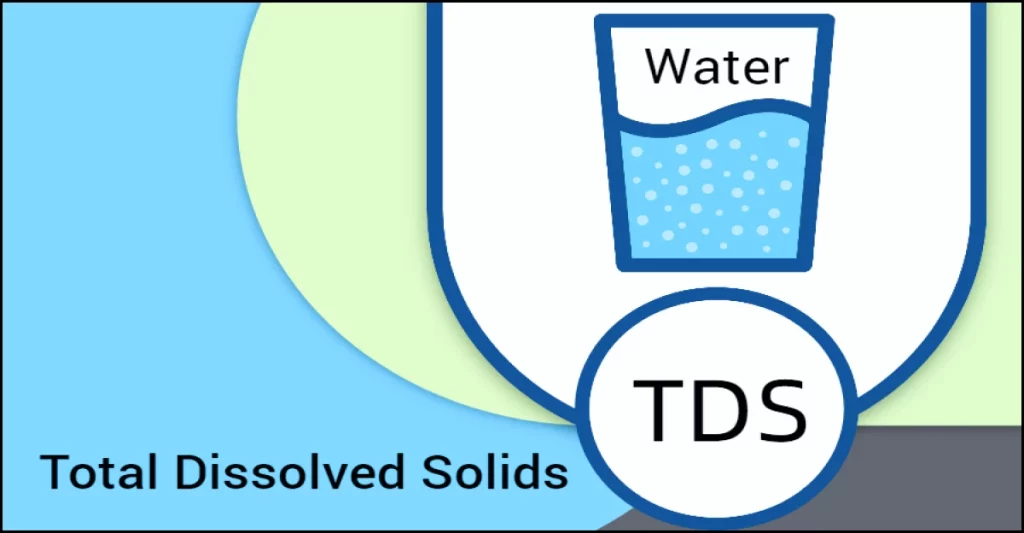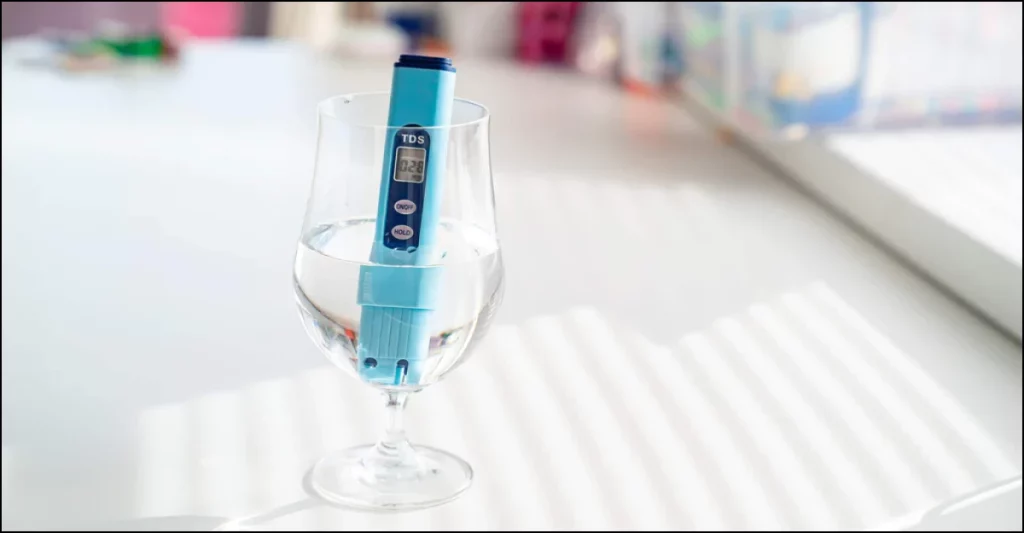Maintaining a good water quality is a major concern for both personal health and environmental sustainability. One of the important aspects of ensuring a healthy water quality is its Total Dissolved Solids (TDS) content.

To know about it in detail, we’ll discuss how to check TDS of water and the best practices to follow.
What is the TDS of Water?
TDS, i.e. Total Dissolved Solids, refers to the combined content of inorganic and organic substances dissolved in water. These substances can include minerals, salts, metals, ions, and other compounds. These particles can occur from various origins and get dissolved in the sources that are flowing water to your houses.
While some of the dissolved substances are essential for human health and contribute to water taste and nutritional value, elevated TDS levels can indicate the poor quality of water.
Some Common TDS in water
Here are some of the common total dissolved solids that may be present in the water.
- Magnesium
- Lead
- Potassium
- Calcium
- Chloride
- Arsenic
- Zinc
- Aluminum
- Copper
- Sulphates
- Bicarbonates
- Herbicides
- Chlorine
- Iron
- Fluoride, etc.
Sources of TDS in Water
These are the particles that can come from any sources, be it natural or man made. Man made sources or the result of human activity produces particles like pesticides and herbicides which may damage agricultural work, chlorine which may come from water treatment plants, etc.
Natural sources of TDS particles include rivers, plants, lakes, etc.
TDS Water Chart
Here is the TDS water chart which we’ll help in understanding better about various and appropriate TDS levels.
| TDS Water Level | Water Quality |
| <50-250 ppm | Low, as it lacks essential minerals like calcium, zin, magnesium, etc. |
| 300-500 ppm | Ideal perfect quality. This level is best for drinking water. |
| 600-900 ppm | Not a suitable quality of drinking water. |
| 1000-2000 ppm | It is not recommended and good to drink water at TDS level, simply a poor quality of water. |
| >2000 ppm | Totally an unsafe level of quality and at this level the filters at home are unable to filter this level of impurity. |
(Ppm: Parts Per Million)
How to Check TDS of Water?
To maintain a set amount of TDS in water is crucial because when it exceeds a certain set mark or limit of drinking water, it becomes a topic of concern.
Here are some of the methods that can be used to check the TDS of water at home.
(1) By Using a Digital TDS Meter
This one is being regarded as the most simplest method to check the TDS of water at home, and is also a widely accepted method. One of the most prominent reasons to use this TDS meter is that it does not require any mathematical calculation and provides instant results.
This helps in tracking the TDS levels and its fluctuations in the water.

Steps for using digital TDS meter:
Step 1 – Remove the cap of the meter and press “On”.
Step 2 – Dip the TDS meter in the water sample upto the maximum level using the marking on the meter.
Step 3 – Stir the meter in the water sample to remove the air bubbles present in it. If any.
Step 4 – Leave the TDS meter in the sample for at least 10-15 seconds.
Step 5 – note down the reading (some meters provide the reading by itself by multiplying it by 10, however, in some meters, you need to multiply the reading by 10 to get the exact TDS level).
Step 6 – After the completion of the process, remove the excess water from the meter and place the protective cap back.
(2) By Using Electrical Conductivity
This method involves the use of a sterilized glass beaker, an electrical conductivity, and a water sample. Electrical conductivity releases the electrical current into the water, and with that helps in measuring the resistance.
Steps for using this method:
Step 1- Place the beaker on the surface and switch ON the electrical conductivity meter.
Step 2 – Place the measuring lead into the water sample.
Step 3 – At the start, the readings will fluctuate for some time, wait for some time so that the reading gets stabilized.
Step 4 – Note down the reading. It will be in micro siemens (µS).
The reading thus will indicate the purity level of the water, the lower the reading, the higher the purity level, and vice versa.
(3) By Using a Filter Paper and a Scale
One of the most convenient methods for checking the TDS of water, in which there is no requirement of any equipment.
For using this method, we need a water sample, a clean & sanitized glass container, filter paper or cotton layers, an evaporating dish, a stock for stirling, a pipette to take a water sample, a weighing scale or a machine.
Steps for using this method:
Step 1 – Weigh the evaporating dish.
Step 2 – Stir the water sample taken.
Step 3 – Take a pipette and collect around 50ml of the water sample.
Step 4 – Pour the water sample into the container using the filter paper and repeat it for at least 3 times.
Step 5 – Collect the matter from the filter paper and place it on the evaporating dish.
Step 6 – Last, weigh the evaporating dish with the filtrate, and calculate the TDS value.
TDS Levels For Plants
TDS also has a major role to play when it comes to providing nutrients to the plants. Two common substances that frequently result in high TDS levels for plants are nitrate and potassium. These two substances are greatly beneficial for providing nutrients to the roses.
On an average, vegetables should have a TDS level of around 900-1000 ppm, and flowers should have a TDS level of around 1000-1100 ppm.
Best Practices to follow for checking the TDS of Water
1. Sample Collection: Always collect water samples in clean and sterilize containers to prevent the contamination within it. Samples should always be taken from the source of testing, i.e., taps, containers, natural bodies, etc.
2. Various Measurements: To get a comprehensive understanding of water quality, try to get water samples from different locations to know the depth of TDS levels.

3. Frequency of Monitoring: Maintain a regular monitoring schedule that is based on the water source and its intended use, like either for drinking, watering plants, etc.
4. Record of the readings: By keeping the detailed records of the data, time, location, and the reading, can serve as the valuable insights for tracking changes in the water quality over time.
5. Interpretation: These levels are generally measured in parts per million i.e. ppm. A lower level of TDS indicates a fine and soft water quality with less minerals, while higher level indicates the presence of hard water with more presence of solids.
In the search of ensuring the best water quality, TDS testing emerges as one of the trusted companions to know about it. By utilizing methods like TDS meter, filter paper & scale, electrical conductivity, any individual can check the TDS quality of water and with that can also identify the potential issues that majorly occurs, like water contamination, etc.

Yup, these methods are really effective and one can perform it easily.